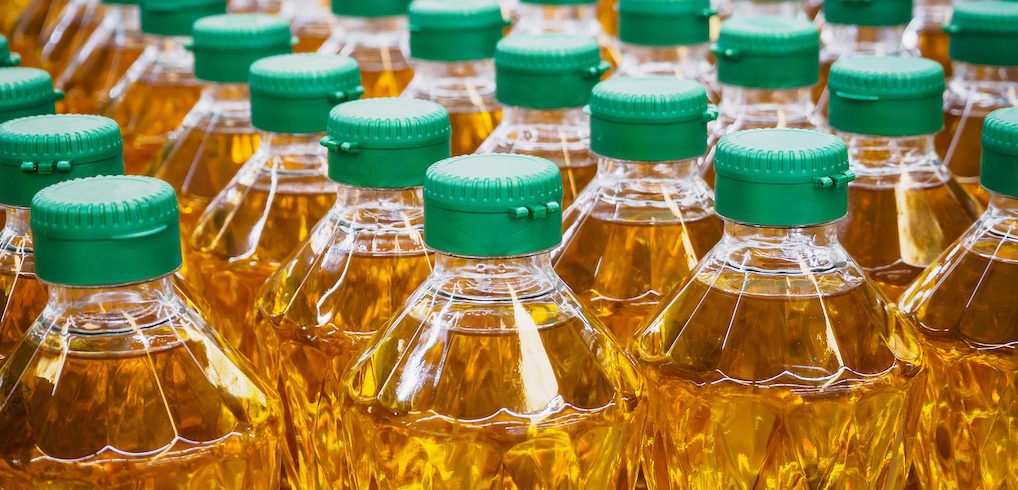
Oil oxidation, also known as rancidity, is a challenge that all processors in the edible oil industry must face. There is no avoiding oxidation – oil is always in a state of oxidation, and the process cannot be stopped completely. However, oxidation can be limited with certain steps.
What is oil oxidation?
Oxidation is an undesirable series of chemical reactions in oil that degrades its quality and value. Some oils naturally oxidize faster than others due to their composition of fatty acids and antioxidant compounds. However, external interactions during storage and processing also have a significant impact on the rate of oxidation.
The characteristic changes that are the most obvious during the oxidation process are the oil’s development of rancid taste and smell. Other indicators can be visible in the oil’s color, viscosity, density, and solubility. Less noticeable is the degradation of vitamins and reduction in essential fatty acids.
These changes degrade oil quality by reducing its palatability and nutritional value, and some studies show oxidized oil can be toxic for the person or animal consuming it.
Oil degradation matters to processors because oxidized oil must be removed during refining, translating to a direct product loss. And if processors leave oil in its unrefined state, for example, in animal feed, the oil can degrade enough that its rancid smell and taste prevents consumption.
Identifying and responding to the key factors that cause oxidation is critical to reducing losses.
Contributing factors
A significant challenge in the industry contributing to oil oxidation during processing is temperature. Heat plays a substantial role in most processing methods, and it also plays a prominent role in accelerating oxidation.
Heat is used during processing to reduce moisture, cook the seed, and in the case of soybeans, destroy harmful anti-nutritional factors. One method processors can use to limit the impact of heat is to install an extruder, like the Anderson Dox™, ahead of a press.
The Dox is designed to mechanically shear, cook, and dry the oilseed for improved oil recovery. It has a short residence time – about 30 seconds – so the Dox applies the minimal amount of heat to limit oxidation while ensuring proper seed preparation before entering the press.
Moisture is another catalyst of oxidation that an extruder can limit. The Dox flash dries moisture from the seed, further reducing oxidation while improving pressing ability. Processors should adequately dry the material before and after processing to minimize moisture and limit its impacts.
Other factors contributing to oil oxidation are oxygen exposure, light, and exposure to metals. Processors should store their products throughout the process in sealed, dark glass, or opaque containers with the smallest possible headspace. It’s imperative to limit the amount of time the materials contact transition metals or remove them during processing.
Read more about how the high-shear extruder adds extreme flexibility for soybean oil milling.
Need assistance with your oilseed equipment now?
Do not hesitate to call us at 1(800) 336-4730 or use our contact form.
Values and measurement
Processors should run tests at different processing stages to monitor oil for both primary and secondary breakdown products. Although there is no official standard for evaluating edible oil quality, peroxide value (PV) and anisidine value (AV) are commonly used in industry to assess edible oil quality.
Peroxide Value
PV is an index used to evaluate the number of hydroperoxides present in fats and oils. Hydroperoxides are the primary oil oxidation products formed in the early stages of oxidation. In general, the lower the PV, the better quality of the oil.
However, evaluating oil quality based on PV alone can be misleading. PV levels will decrease as the level of oil oxidation advances and as secondary oxidation products appear. Both PV and AV should be used for oil quality evaluation.
Anisidine Value
AV is a measure of the secondary oxidation products that form in the oil. The secondary oxidation stage occurs when the hydroperoxides decompose to form carbonyls and other compounds, particularly aldehydes. This stage of oxidation results in the rancid smell of oxidized oil. Like PV, in general, the lower the AV, the better the oil quality.
Totox Value
Processors use the Totox value to determine an oil’s overall oxidation state. It is calculated by the formula AV + 2PV. The lower the Totox value, the better the quality of the oil. The Totox value shows the whole story of both primary and secondary breakdown of products.
Next steps
To ensure maximum profitability and improve quality, processors should monitor oxidation values in their products throughout processing. Precautionary steps should be taken during storage and processing to reduce exposure to heat, moisture, oxygen, light, and metals.
If you aren’t sure if your system design is built to limit oxidation, our team of experts can work with you and assess your plant setup and challenges. Our team can guide you through system design including layout, storage, and machinery selection, to best meet your plant needs, minimize operating expenses, and maximize product quality.
To learn more about Anderson processing solutions and capabilities, contact us today.